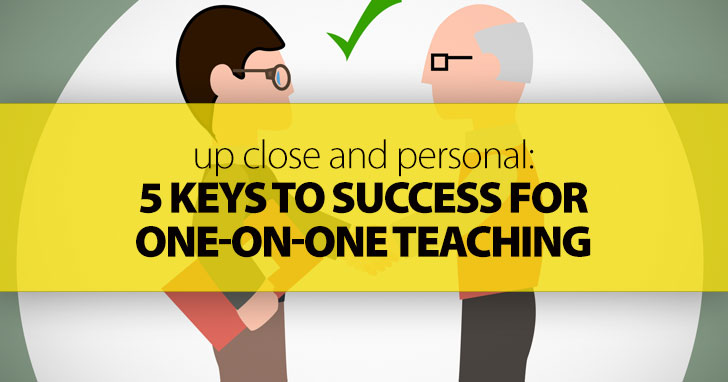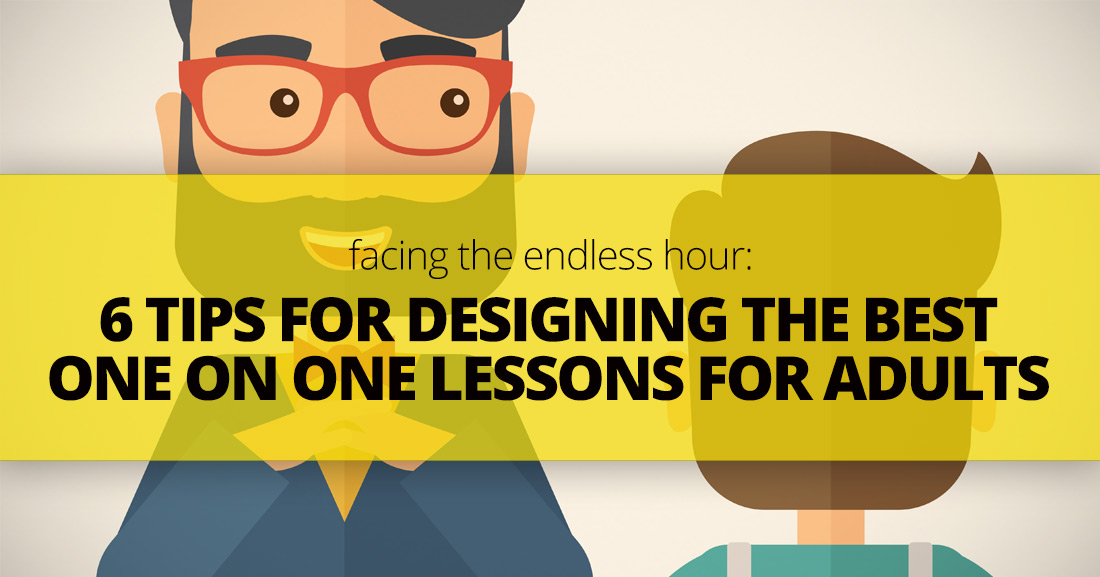Up Close and Personal: 5 Keys to Success for One-on-One Teaching


Other students want one on one attention, and they choose private teaching or tutoring over a classroom plan to make sure they get it. When you teach in that kind of setting, face to face with only one student to think about, here are some things you should keep in mind for making the most of your teaching hour.
Just because you may be meeting your adult student one on one at a coffee shop doesn't mean you should go without structure for your hour. It is perfectly fine and even beneficial to have some plans in place for your hour. Try setting a schedule in your mind or on paper, and don't be afraid to share your plans with your student. If you aren’t sure how to structure your time, consider something along these lines. Plan the first ten minutes for greetings and small talk, then take five minutes to review any homework you may have assigned. Let your student share what they have encountered and learned outside of class for the next ten minutes and then cover new material and teach for twenty to thirty minutes. Take the last fifteen minutes to review and go over any homework assignments. Once you have a structure in place, you can still go with the flow and be flexible with what you spend your time on, but at least you will have some idea where you are going even if you decide to take a side trip.
Think about your student’s ultimate goals in learning English. Some students just want conversation practice, but more often people study the language for educational or career purposes. If that is the case for your student, be intentional about covering material they will need to meet their future goals. If your student wants to attend an English university, consider using text books or having your student view lectures online while you meet or for homework. If your student plans on using English in business, help her set up an email account and practice communicating that way. When you make your lessons applicable to their ultimate goals, your student will know that your meetings are time well spent. More than that, your student will be fully engaged and will apply himself more to what you are teaching.
While a rough schedule is of great value, flexibility is even more important. Your student chose to meet one on one rather than signing up for a class because he wanted the individual attention you would provide. So when he wants to go in a specific direction or has questions you didn't plan on answering, respect that. You can't allow your plans to bowl over your student’s wishes. That doesn’t mean you should let your student direct every aspect of class. You are the experienced professional. You know what he needs even when he doesn’t. It does mean you shouldn’t be so set on your own plans that you can’t or won’t go down a tangent that is important to your student. Walking the fine line between what your student wants and needs can be tricky, but it’s not impossible and it is also very important for keeping your client happy.
When you meet with your student to talk for an hour, her mistakes in pronunciation and grammar may hit you like a strobe light, regularly pulsing and demanding attention. Don't give in to that. Ultimately, language learning is about communication, and you should stress the ability to get your message across over perfection in pronunciation and grammar. I have yet to meet the native English speaker who refused to talk to someone with a foreign accent. The rub comes when that accent is so strong it inhibits the speaker’s meaning. That's when issues of pronunciation should be addressed – when they are so extreme you cannot understand what your student in trying to say. You may have to explain this to your student, that communication trumps perfection, as he may wrongly believe he needs perfect pronunciation. Correct when necessary, but don’t try to beat the foreign accent out of your student. It’s perfectly acceptable to not have a native speaker’s pronunciation skills.
A major part of your one on one time should be conversation, particularly if you are teaching in a non-English speaking area. You may be the only native English speaker your student gets a chance to talk with. Make the most of your hour by devoting plenty of time to conversation, and don’t spend your entire time with noses in a text book. If you are unsure what to talk about, try bringing in an English newspaper or magazine or print some articles from an online news site. Undoubtedly you will find plenty to talk about that you both will find of interest. Newspapers are also good for introducing vocabulary and for short reading assignments since paragraphs tend to be shorter and the level of writing is less complex than that of many other sources.
For any one on one meeting, you should be prepared with paper and pens as well as an English dictionary and other books you might be teaching from. Even if your student only wants conversation practice, you should have a means for writing down unfamiliar vocabulary and diagramming grammar structures when they come up, and you’ll need more than napkins to look professional doing it. Be professional. Have a notebook and pen handy at all times so you are ready to use them at the drop of a hat. You may find that your student appreciates it when you do. I always give my student the notes I make during our lessons, and I have often seen them reviewing those notes or referencing them at later dates.
By keeping these six tips in mind, you can be sure that your one on one teaching time is the best it can be and the most rewarding for both you and your student.